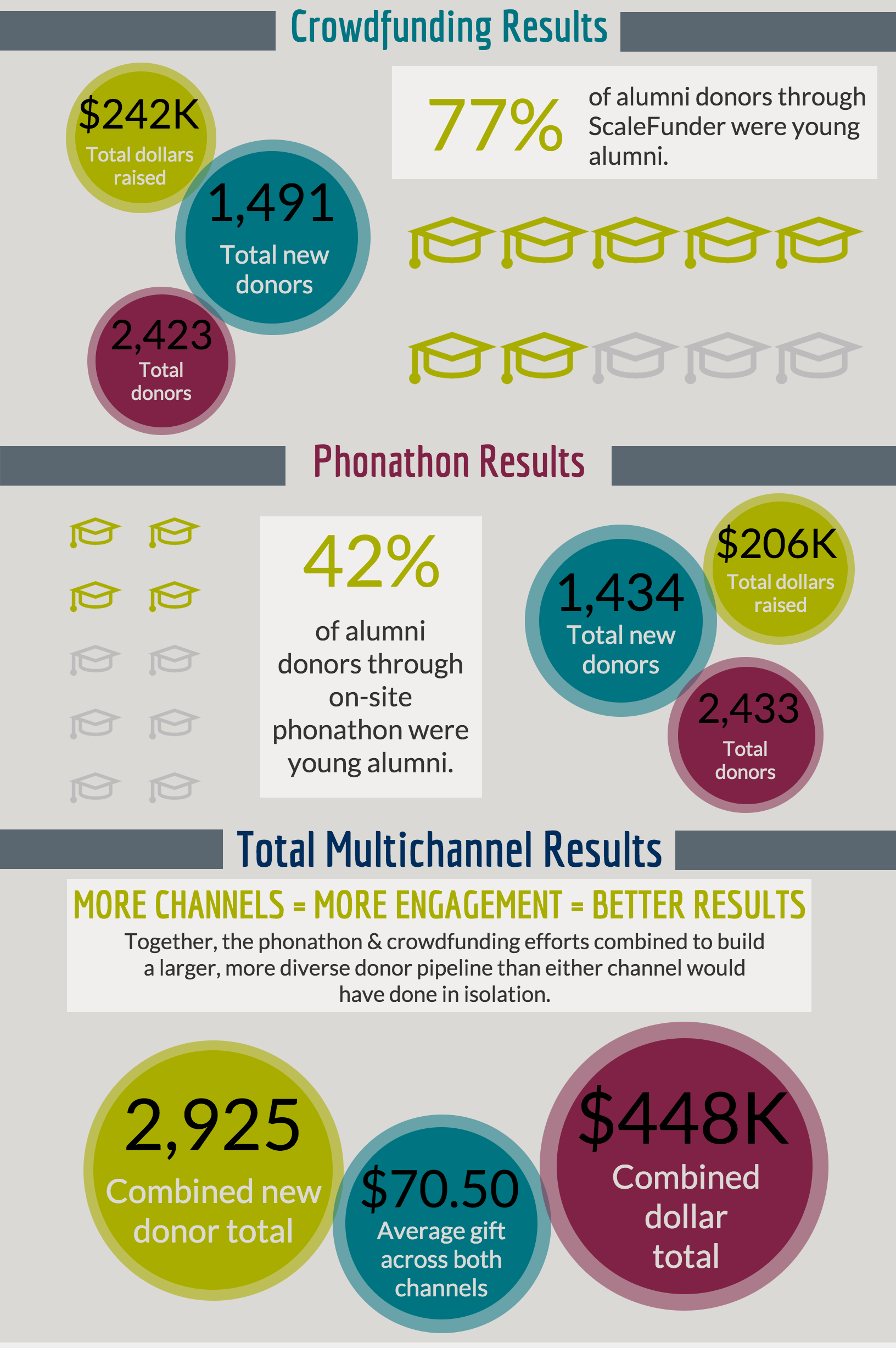fundraising
Four tips for engaging young donors through multichannel fundraising
It’s an uncertain time for higher education fundraising. In terms of dollars, total giving is on the rise. But from 2007 to 2015, 69% of higher education institutions saw a decline in their alumni donor counts, with an average loss of 26%.
This is an unsustainable scenario. Institutions are becoming increasingly dependent on small groups of large donors, and at some point, that will undermine total giving.
A healthy donor pipeline is the lifeblood of a college or university, and the annual gift is often the starting point for donors.
The long-term solution is to build a robust giving pipeline with young alumni. The difficulty, however, is that young alumni are a tough group to engage. Today’s young alumni receive more solicitations from more nonprofits, direct their giving to fewer charities, and are less inclined to make a gift purely out of loyalty than previous generations. So what can your institution do to engage this group and build a foundation for giving that could eventually lead to major gifts? Here are four ideas to increase your chances of success with young donors and strengthen their engagement with your institution.
1) Understand the changes in young alumni behavior and the increased competition for their attention
There have been seismic shifts in demographics, technology, and behavior that have radically changed how young alumni interact with their alma maters. Recent graduates are more mobile, interact online, and rely on social networks for confirmation of their behavior. While young people are definitely giving to charities, their loyalty cannot be expected, it must be earned.
In addition, young donors have grown up in an age where they have been bombarded with hundreds of marketing messages per day. There is so much competition for their attention that your message can easily be drowned out.
These demographic and behavioral changes require new thinking about fundraising strategies. To engage young donors and keep them in the pipeline, institutions need to:
- Create communications that are tailored to the individual, rather than sending the same general messages.
- Keep contact information up to date, given the increased mobility of young alumni.
- Make retention a high priority with young donors, as they are less likely to give again without outreach and further motivation.
2) Make giving personal for young donors
Personalized giving has risen among all donors, but it’s especially relevant to young donors. They want to see the direct impact of their donations. Here are a few ways institutions can encourage personalized giving:
- Take advantage of technology that can support personalized giving, connecting the donor to the cause as well as recognizing and acknowledging their contribution. This can also be useful for stewardship and future asks.
- Remember that personalized giving is as much about the donor’s perceived relationship to the cause as it is about the cause itself. Finding ways for donors of all ages to be involved with the school in a meaningful way can make a big difference in retention.
- Be diligent about donor relations. In order to inspire additional giving, it is important to demonstrate the specific impact of the first gift. Don’t leave your donors in the dark – make sure they hear from the college regularly about the great things their gift has made possible.
3) Adapt to a digital world for fundraising
Young alumni are wedded to the internet, their mobile devices, and social media. Charitable crowdfunding and online giving day experiences have captured donor excitement and brought new energy to fundraising programs. The best programs bring a synergy with traditional methods like phone and direct mail, and require careful thought and planning to encourage action, not confusion, for donors.
In addition, digital fundraising allows you to turn donors into ambassadors via social media. Be sure to allow excited donors to share their contribution and spread the word on Facebook, Twitter, and other social media, which can multiply your reach.
4) Increase your chances of making a connection with young donors by communicating across multiple channels
Young donors expect a wide array of messages, options, and customization in their giving experiences. This extends to the marketing channels. Institutions should follow the lead of today’s marketers—44 percent use at least three channels to communicate with targets, and each channel has its own reach and signature. Direct mail and phone work even better when combined with digital outreach such as email and crowdfunding.
The University of Maryland used a multichannel approach in its latest fundraising campaign, which included onsite phonathon managed by Ruffalo Noel Levitz as well as our crowdfunding platform, ScaleFunder. Here were the highlights:
University of Maryland 2015 multichannel fundraising campaign

Perhaps it’s not surprising that the majority of first-time donors to crowdfunding were young alumni, but it is exciting to see the success that Maryland is having with this group. What some fundraisers do find surprising is the large percentage of young alumni donors giving through phonathon. And we see that story repeated at many of our partner institutions.
One of the reasons to have a robust multichannel program is that each type of outreach can appeal to different people. Although we can generalize about young donors, each person is unique. While digital channels are undoubtedly a key piece of engaging recent graduates, it would be a mistake to assume that other channels aren’t successful with this group.
How can you create a stronger approach for engaging young alumni?
These strategies are working well for many of our college and university partners, but what approach works best for your campus? I would be happy to discuss your goals for donor engagement, both for young alumni and older donors, and what you can do to optimize your communications and build a better pipeline.
Email me with your questions or concerns, I’ll reach out for a time to talk.